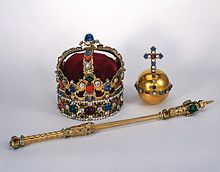
Szczerbiec is the ceremonial sword used in the coronations of most Polish monarchs from 1320 to 1764. It now is displayed in the treasure vault of the royal Wawel Castle in Kraków, as the only preserved part of the medieval Polish crown jewels. The sword is noted for its hilt, decorated with magical formulae, Christian symbols, and floral patterns, as well as for the narrow slit in the blade which holds a small shield with the coat of arms of Poland. The name of the sword is derived from the Polish word szczerba, and its meaning is incorrectly perceived as "the Notched Sword" or "the Jagged Sword", though the edges of its blade are straight and smooth. Proper meaning and rendering into English would be "the Notching/Jagging Sword" — as "a sword that is meant to notch/jag other weapons".

Crown jewels are the objects of metalwork and jewellery in the regalia of a current or former monarchy. They are often used for the coronation of a monarch and a few other ceremonial occasions. A monarch may often be shown wearing them in portraits, as they symbolize the power and continuity of the monarchy. Additions to them may be made, but, since medieval times, the existing items have been typically passed down unchanged, symbolizing the continuity of a monarchy.

Władysław I Łokietek, in English known as the "Elbow-high" or Ladislaus the Short, was King of Poland from 1320 to 1333, and duke of several of the provinces and principalities in the preceding years. He was a member of the royal Piast dynasty, the son of Duke Casimir I of Kuyavia, and great-grandson of High-Duke Casimir II the Just.
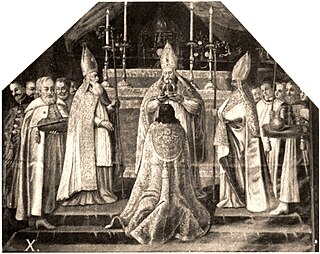
Coronations in Poland officially began in 1025 and continued until 1764, when the final king of an independent Poland, Stanisław August Poniatowski, was crowned at St. John's Cathedral in Warsaw. Most Polish coronations took place at the Wawel Cathedral in Kraków, but crownings also occurred in Poznań and at Gniezno Cathedral. Whenever practical, Polish coronations were conducted as close as possible as to the date of the previous sovereign's funeral. This was explained by Joachim Bielski in the sixteenth century as osoba umiera, korona nie umiera, or "the person dies, the crown dies not". With the emergence of an independent, republican Poland after World War I, coronations in the Polish state have been rendered obsolete.
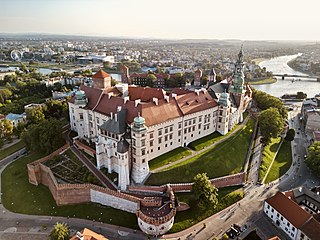
The Wawel Royal Castle and the Wawel Hill on which it sits constitute the most historically and culturally significant site in Poland. A fortified residency on the Vistula River in Kraków, it was established on the orders of King Casimir III the Great and enlarged over the centuries into a number of structures around an Italian-styled courtyard. It represents nearly all European architectural styles of the Medieval, Renaissance and Baroque periods.

Crown of Maria Josepha was made for Maria Josepha of Austria for her coronation as queen consort of Poland in 1734.
The Crown of Augustus II was intended for his coronation as a King of Poland. The crown was made in 1697 by Freiburg's goldsmith Johann Friedrich Klemm. It was not used, however. The Augustus II's crown is kept in Dresden Armory (Rüstkammer) in Dresden, Germany.

The crown of Augustus III was made in 1733 for Augustus III's coronation in Kraków in 1734.
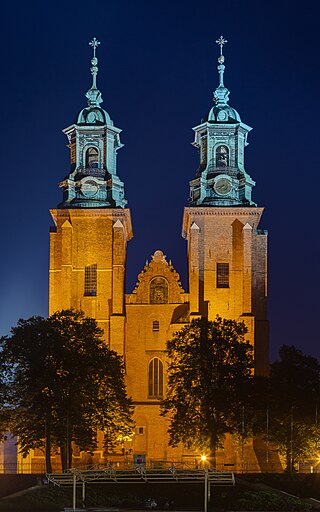
The Royal Gniezno Cathedral is a Brick Gothic cathedral located in the historic city of Gniezno that served as the coronation place for several Polish monarchs and as the seat of Polish church officials continuously for nearly 1000 years. Throughout its long and tragic history, the building stayed mostly intact, making it one of the oldest and most precious sacral monuments in Poland.
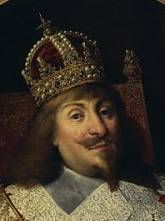
The Swedish Crown, also known as the "Purchased Crown", was a part of the Polish crown jewels.

The Grunwald Swords are a pair of simple bare swords sent as a mocking "gift" by Ulrich von Jungingen, the Grand Master of the Order of Teutonic Knights, to King Władysław II Jagiełło of Poland and Grand Duke Vytautas of Lithuania. The swords were sent on 15 July 1410, just before the Battle of Grunwald (Tannenberg), as a symbolic invitation to engage Jungingen's forces in battle. After the Polish–Lithuanian victory, both swords were taken as a war trophy by King Władysław II to Kraków, Poland's capital at the time, and placed in the treasury of the Royal Wawel Castle.

The Crown of Bolesław I the Brave, also known as the Corona Privilegiata, was the coronation crown of Polish monarchs and the centrepiece of the Polish crown jewels. The original crown was made for the coronation of Ladislaus the Short in 1320 and symbolised the regalia bestowed upon Bolesław I the Brave by Emperor Otto III over three centuries earlier. Following the Partitions of Poland, the crown along with other insignia was stolen from the royal treasury at Wawel Castle in Kraków and melted down.
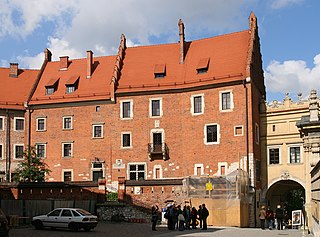
The John Paul II Cathedral Museum is a museum in Kraków, Poland. It is situated on Wawel Hill, between the Vasa Gate and the former seat of the Castle Seminary, in the Cathedral House, which is composed of two 14th-century buildings.
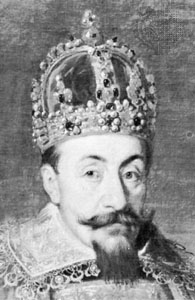
The so-called Muscovy Crown was a part of the Polish Crown Jewels. It was made in about 1610 in anticipation of Prince Władysław Vasa's coronation as Tsar of Russia, which was also known as Muscovy. Due to his father's opposition and a popular uprising in Russia, he never actually took the Russian throne, despite being elected by the Seven Boyars. Nevertheless, until 1634 he used the title of Grand Duke of Muscovy.
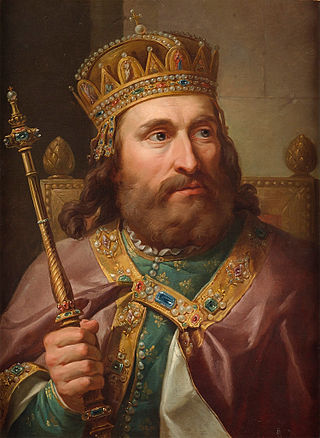
The Hungarian Crown was a part of the Polish crown jewels. It was made in the 16th century, resembling the Crown of Saint Stephen, as a private crown of John II Sigismund Zápolya.

The Funeral Crown, also known under its Latin name as the Corona Funebris or Funebralis, was a part of the Polish Crown Jewels. It was probably lost before 1669.

The Homagial Crown, also known under its Latin name as the Corona Homagialis, was a part of the Polish Crown Jewels. It was mentioned for the first time in the 15th century in the inventory of the Wawel Royal Treasury. It was probably the coronation crown of Władysław II Jagiełło.
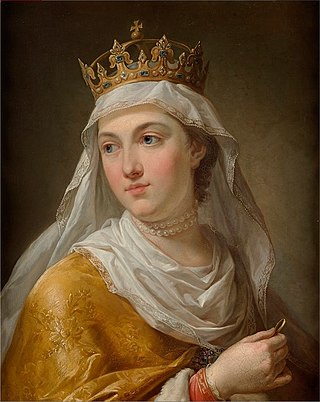
The Queen's Crown was a part of the Polish Crown Jewels until it was destroyed in 1809. It was mentioned for the first time in the inventory of the Wawel Royal Treasury in the 15th century.

The Jagiellonian tapestries, are a collection of tapestries woven in the Netherlands and Flanders, which originally consisted of 365 pieces assembled by the Jagiellons to decorate the interiors of the royal Wawel Castle in Kraków, Poland. The collection is also collectively known as the Wawel Arrasses, as the majority of the preserved fabrics are in the possession of the Wawel Castle Museum and the French city of Arras, which was once a manufacturing centre of this kind of wall decoration in the beginning of the 16th century. The works became state property of the Crown of the Kingdom of Poland according to the will of Sigismund II Augustus.

